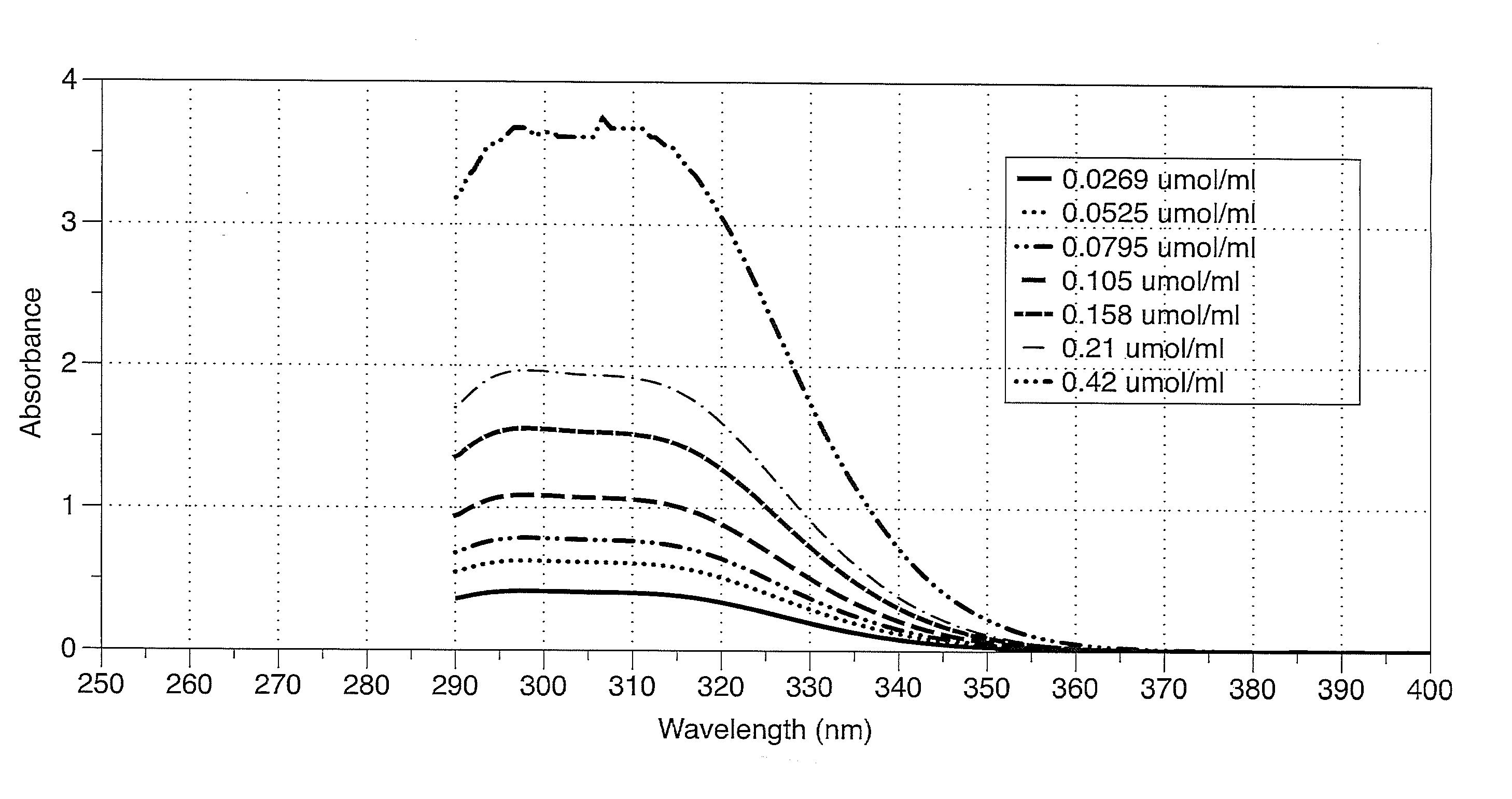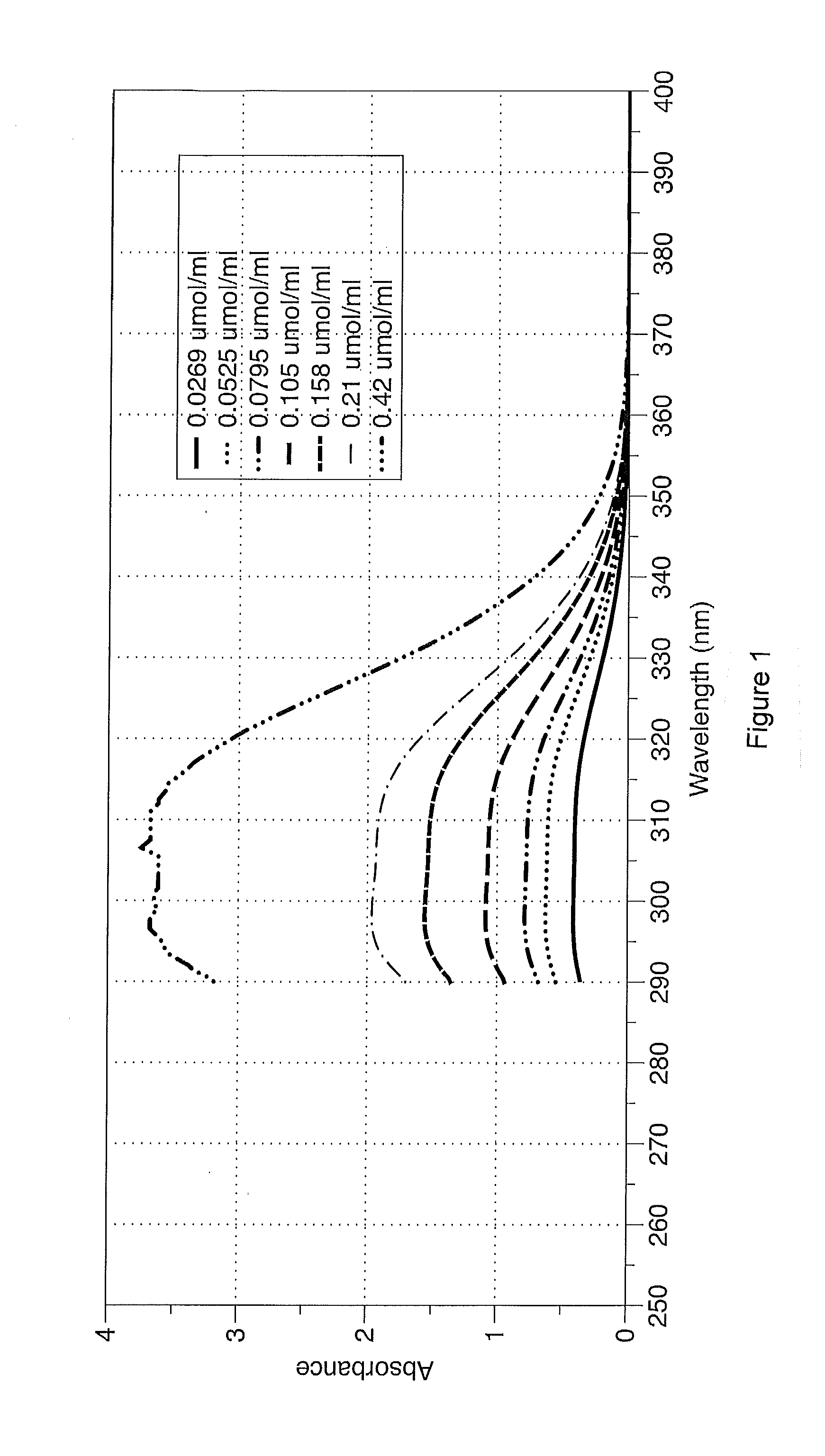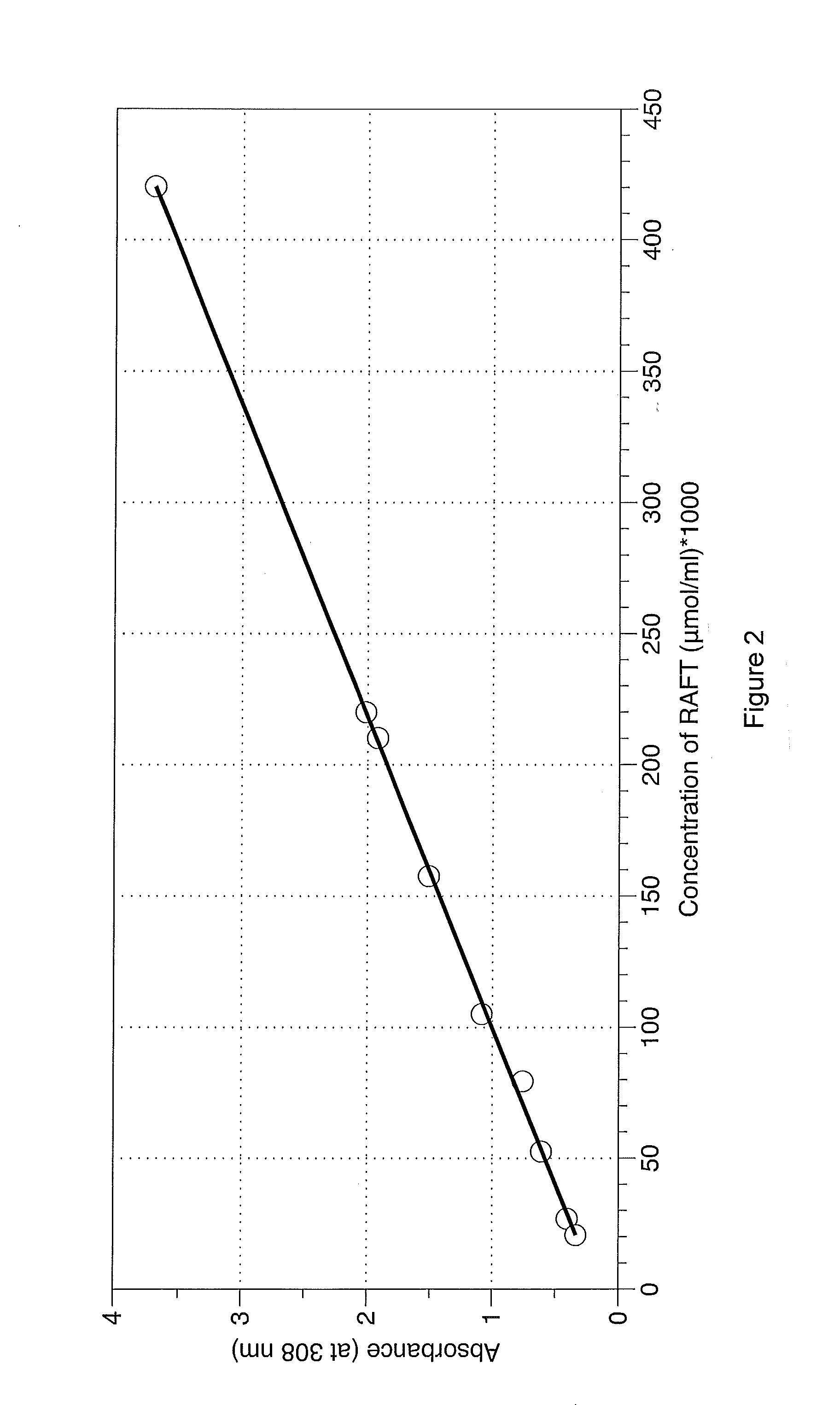Shale oil and gas fracturing fluids containing additives of low environmental impact
a technology of additives and fracturing fluids, which is applied in the field of chemical additives, can solve problems such as limited, and achieve the effect of less harmful to the environmen
- Summary
- Abstract
- Description
- Claims
- Application Information
AI Technical Summary
Benefits of technology
Problems solved by technology
Method used
Image
Examples
examples
1. Synthesis of CPDB Anchored Silica Particles
[0066]A solution (10 ml) of colloidal silica particles (30 wt % in MIBK, Nissan Chemical, 15 nm diameter) was added to a two necked round-bottom flask and diluted with 75 ml of THF. To it was added 3-aminopropyldimethylethoxysilane (0.16 ml, 1 mmol) and the mixture was refluxed at 75° C. overnight under nitrogen protection. The reaction was then cooled to room temperature and precipitated in large amount of hexanes. The particles were then recovered by centrifugation and dispersed in THF using sonication and precipitated in hexanes again. The amino functionalized particles were then dispersed in 40 ml of THF for further reaction.
[0067]A THF solution of the amino functionalized silica particles (40 ml, 1.8 g) was added drop wise to a THF solution (30 ml) of activated CPDB (0.25 g, 0.65 mmol) at room temperature. After complete addition, the solution was stirred overnight. The reaction mixture was then precipitated into a large amount of 4...
PUM
| Property | Measurement | Unit |
|---|---|---|
| particle size | aaaaa | aaaaa |
| depths | aaaaa | aaaaa |
| particle size | aaaaa | aaaaa |
Abstract
Description
Claims
Application Information
 Login to View More
Login to View More - R&D
- Intellectual Property
- Life Sciences
- Materials
- Tech Scout
- Unparalleled Data Quality
- Higher Quality Content
- 60% Fewer Hallucinations
Browse by: Latest US Patents, China's latest patents, Technical Efficacy Thesaurus, Application Domain, Technology Topic, Popular Technical Reports.
© 2025 PatSnap. All rights reserved.Legal|Privacy policy|Modern Slavery Act Transparency Statement|Sitemap|About US| Contact US: help@patsnap.com



